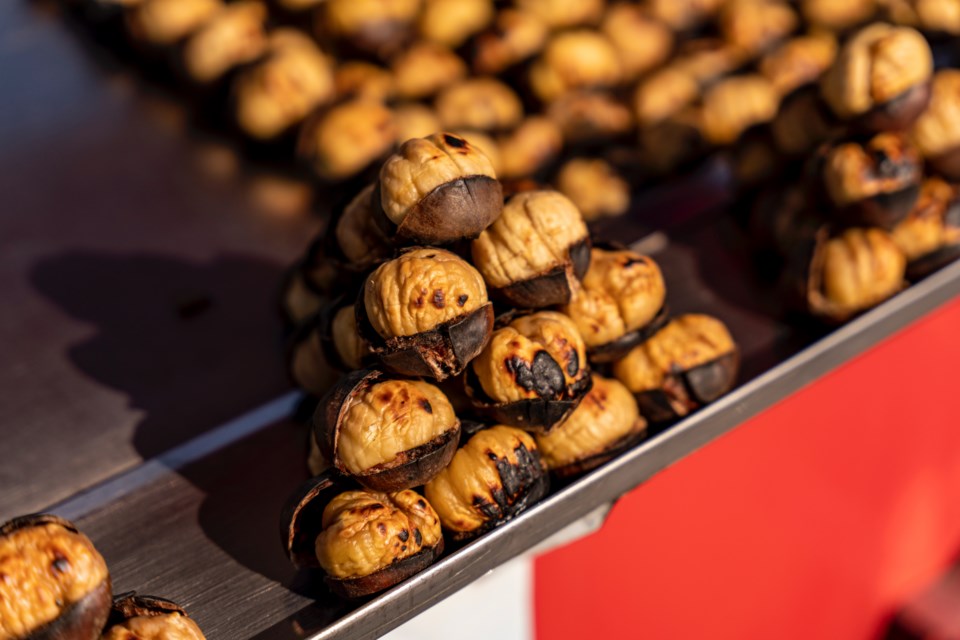Customs and ways of celebration associated with Christmas have evolved over the centuries. If people who lived during the early days of Elora and Fergus were to drop in on their communities during the Christmas season of our time, they would be completely unfamiliar with such (now) iconic Christmas fare as the Little Drummer Boy, Frosty the Snowman, the Grinch, Rudolph the Red Nosed Reindeer, and Charlie Brown and the Peanuts gang.
They would never have heard of turkey stuffing in a box, cranberry sauce in a can or artificial Christmas trees. In their time they had real Christmas trees, often decorated with real candles tipped with real flames. People had to be very careful with those, because fire extinguishers hadn’t been invented yet.
But some Christmas items and customs have remained basically the same over the generations.
Families still get together to share good times, exchange gifts, enjoy traditional Christmas carols and stories, and remember just where and how Christmas originated.
Of course, there is Christmas dinner, which is pretty much the same event now that it was for our ancestors. People in Elora and Fergus sat down to the same Yuletide meal in our forebears’ days as they do now. Or did they?
It is very likely that the bread on the table would have been baked right there in the home, as well as any cakes, pies and other pastries. The family would probably have butter tarts, said to have been invented in an Ontario farm kitchen. Butter tart purists insisted that nuts or raisins should never, ever be added, but an exception might be made for Christmas.
There would probably be mashed or roasted potatoes and dishes made from squash or turnips, as well as carrots, peas and all the other veggies people grew in their own gardens. But there might also be roasted chestnuts, gathered in the autumn from the woods.
Fruit would most likely be in the form of preserves. Those who could afford them might have candied fruits and maybe even imported treats like oranges. An added benefit to having oranges or even lemons (for juice) at Christmas was that the peels could be put into wardrobes and bureau drawers to make clothing and bedding smell nice. Citrus peels certainly smelled better than moth balls.
A roasted turkey would be central to most Christmas dinners, but some families would still keep the English tradition of a Christmas goose. For a few pioneering families, if it wasn’t economically feasible to buy a Christmas turkey or goose, or even pluck an unlucky one from your own farmyard, there was the option of having the hunter in the family go out and bag a Canada goose – there were usually a few that had stuck around instead of flying south for the winter. Partridges also roamed local woods.
Some people found the meat of the Canada goose a bit too gamey. According to Wellington County historian A. Leone Hinds, many women thought it tasted something like fish and swamp water.
But there were ways, including soaking it in skim milk and cooking it with wild onions, chives and leeks, to mask the gaminess. For alternatives, there was rabbit or venison.
For festive beverages, people made their own eggnog and punch – with or without alcohol. You could have your wine or apple cider mulled, that is, heated with a hot poker. You could toast the season with whiskey or rum, or maybe even a mug of homemade spruce beer. For kids there was hot chocolate, topped with a gob of whipped cream.
You didn’t have to buy a Christmas tree – unless you really wanted to. They were free for the taking, as long as you didn’t mind a hike in the woods. That was also where people found the evergreen boughs and pine cones they used for making Christmas decorations. No doubt those early residents of Elora and Fergus would be dazzled by the outdoor lights people put up today.
Most people attended church services, and the ringing of church bells was part of the celebration for the various congregations. Christmas carols were sung both in church and in front of people’s homes by carollers who went door to door. Appreciative homeowners would even ask them in for a warm drink.
A favourite form of seasonal entertainment was the school Christmas concert. Kids would entertain their parents, other relatives and friends by singing, dancing, playing musical instruments and performing skits under the guidance of teachers-turned-director. The most common subject matter for sketches was the original Christmas story, with pint-sized actors dressed as shepherds, wise men and angels.
Other stories would involve Santa Claus, elves and even mean old Ebenezer Scrooge, because the story by Charles Dickens very quickly became a Christmas favourite. The show would close with the immortal words of Tiny Tim that are as much a part of Christmas now as they were then, “God bless us, everyone.”



